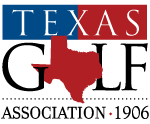Local Knowledge
July 2022
APPLYING HANDICAP ALLOWANCES UNDER THE WORLD HANDICAP SYSTEM™
A handicap allowance is the percentage of a Course Handicap™ recommended to create equity based on the format of play. Handicap allowances are applied to each player’s unrounded Course Handicap prior to determining their Playing Handicap™ for the round.
Since higher-handicap players typically have more variance in their scores and an increased potential to shoot lower net scores, when full Course Handicaps are used in certain formats, players with lower Course Handicaps are generally at a disadvantage. By taking a percentage of Course Handicap, the higher handicap players are impacted more, which brings the expected scores for all players or teams to a more consistent level. Handicap allowances are mainly applied in team formats, where the combination of players can produce lower scores compared to other teams.
Millions of scores and/or simulations were used to determine and validate the handicap allowances used under the WHS™, and while the final decision on the handicap allowance is determined for the event by the Committee in charge of the competition, the USGA recommendations for each format of play can be found under the Rules of Handicapping, Appendix C.
To view the USGA’s quick reference placemat for applying handicap allowances under the WHS, click here.
TGA ASSISTS WITH INAUGURAL TEXAS ADAPTIVE OPEN CHAMPIONSHIP
The TGA was honored to have recently partnered with the Texas Adaptative Golf Association in conducting the inaugural Texas Adaptive Open Championship at The Golf Club at Champions Circle in Fort Worth. The new championship showcased some of the best golfers with disabilities from across the country. World Golf Hall of Fame member Sandra Haynie was on hand to welcome the competitors and hit the ceremonial opening tee shot. Due to inclement weather, the scheduled 54-hole event was shortened to 36 holes. Even so, the soggy conditions couldn’t put a damper on the excitement surrounding the first-ever event, with players and staff alike enjoying a wonderful experience and a successful championship.
To watch the Texas Adaptive Open recap video, click here. To view the final results, click here. To learn more about the Texas Adaptative Golf Association, click here.
USGA INVESTS $1.9 MILLION IN GOLF COURSE SUSTAINABILITY GRANTS
The United States Golf Association has committed almost $47 million to the Mike Davis Program for Advancing Golf Course Management since 1983, and this year’s investment of $1.9 million will go toward grants for more than 80 research projects in 2022.
USGA investment saves the golf industry an estimated $1.92 billion annually, with the money saved coming from advancing irrigation estimates of turfgrass water usage, irrigation scheduling with soil moisture meters, and more efficient fertilizer and pesticide use. Recipients of the 2022 grants include over a dozen universities in the U.S. and cover both short- and long-term projects.
Specific examples include a nationwide evaluation of drought tolerance and water use of commonly used fairway grasses, a project whose goal is the reduction of fertilizer use with specific estimates of nutrient requirements, and turfgrass breeding programs.
“A core focus of the USGA is to ensure golf is not only thriving today, but is also growing in the next 20, 30, and 50 years,” said USGA CEO Mike Whan. “To ensure future success, we need to continually invest in efforts that can address challenges that our game will face long-term – like water scarcity, the cost of labor/resources, and the availability of land.”
To read more about the 2022 grant recipients and current short- and long-term research projects, click here.
RISING CYBER THREATS DEMAND CYBERSECURITY MEASURES FOR GOLF CLUBS [GOLF INC.]
Cyber threats are increasing rapidly across all categories from ransomware, phishing, malware and keylogging attacks to SQL injection, video conference and point of sales attacks. According to the ForgeRock 2021 Breach Report, attacks in the United States involving usernames and passwords increased by an astounding 450% in 2020 from 2019 with over one billion personal records compromised.
For many golf and private clubs, the January 2021 ransomware attack on the Wentworth Club in Surrey, England, was a loud wake up call. In that attack, this exclusive club had its entire membership database hacked by cyber thieves who gained access to its elite members’ names, dates of birth, home addresses, email addresses, landline phone numbers and the last four digits of their bank accounts used for direct debit payments.
The Wentworth ransomware attack was what is known as a double extortion attack wherein sensitive files are stolen before encrypting them on the network. This gives cyber criminals greater leverage in their ransom negotiations as they threaten to expose sensitive files if their demands are not met. Additionally, this type of attack places the individuals whose data was stolen at higher risk for future email phishing attacks since an email including some of their account information could be made to look like it came from their bank. Besides the reputational damage Wentworth suffered, it also suffered a breach of trust with its members.
While clubs can not necessarily avoid a cyberattack, they can minimize their risks and the potential damages by taking a proactive stance and implementing sound cybersecurity measures. In an article for Golf Inc. Magazine, author Joseph Saracino outlines some of the best practices for club cybersecurity.
To read more about cybersecurity measures for golf clubs, click here.



